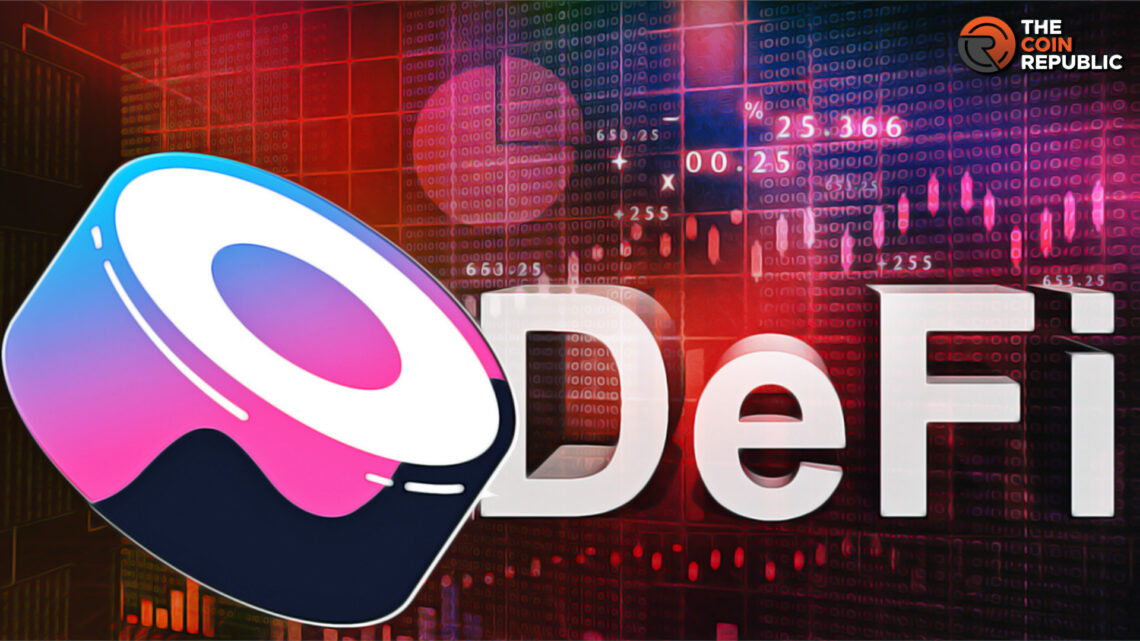- 1 SushiSwap has emerged as a leading DEX offering a number of features to crypto users.
- 2 It enables digital asset users to make use of lending, borrowing, staking, and rewards.
Although major crypto exchanges are centralized, the need for fully decentralized exchanges is catching up. They are enabling the token holders to embrace decentralization to its fullest. These exchanges are showing digital asset users the power of full autonomy given by the ledger.
To fulfill the need, a number of DEXs are emerging and SushiSwap is one of them. In a short time, this DEX has become quite popular. So, let’s quickly unearth its aspects and see how it makes a difference.
SushiSwap: A Detailed Explanation
Launched in 2020, SushiSwap was been created using the Ethereum network. Pseudonymous open-source developers OxMaki and Chef Nomi introduced it as an alternative to Uniswap. Primarily, it enabled digital asset users to swap tokens without an intermediary.
To make it more useful, the founders added some unique functionalities too. They made governance possible through the native SUSHI token. The users were also able to tap into services like liquidity mining. With the token, the owners were able to participate in important decision-making of the protocol.
They were able to decide the staking rewards and trading fees. Notably, holding a SUSHI token isn’t necessary to use the exchange. However, the token gives more privileges like staking and administrative rights.
Glimpse into SushiSwap’s Working
SushiSwap makes use of a certain trading method called automated market maker (AMM). This particular method replaces the order book and establishes an autonomous peer-to-peer system. The AMMs deploy smart contracts to provide liquidity and execute many other tasks.
Since its launch, SushiSwap has been consistently working on new DeFi solutions. It has provided access to flagship services like lending, borrowing, staking, and yield farming very easily. Moreover, to start using SushiSwap, users need an ETH-based wallet.
The most popular ones picked by users are Trust Wallet, Coinbase Wallet, and MetaMask. With the wallet, users get access to the SushiSwap decentralized application (dApp) too. They don’t necessarily require the SUSHI tokens for this purpose. Nonetheless, they can buy it from SushiSwap or from leading centralized exchanges.
Ways To Use SushiSwap
SushiSwap has grown into a full-fledged decentralized platform today. It offers various types of services that have different tools and features. Here are some additional platforms that SushiSwap provides:
SushiSwap Exchange– It’s the main feature of the platform and enables the swapping of different variants of ERC-20 tokens.
Kashi- The dApp facilitates lending and borrowing of different crypto for different purposes. Users can get help from it for leverage trading as well.
SushiBar– This product is specifically used for staking purposes.
Become a Liquidity Provider
Users of SushiSwap can become liquidity providers very easily. They can provide tokens to liquidity pools for the execution of trades and become liquidity providers. By doing that, they receive a percentage of the trading fee. Furthermore, the process of becoming an LP is very easy here. All they need to do is stake their assets in the pool and let AMMs do their job.
The smart contract-enabled system ensures flawless functionality of liquidity pools. Here’s how they can join one.
Step 1: On the SushiSwap platform, click on the liquidity tab.
Step 2: Connect the wallet and choose “+ New Position.”
Step 3: Under “Confirm Adding Liquidity”, choose an even split of SUSHI and ETH.
Step 4: Click on “Approve” and get SUSHI_ETH LP tokens.
Once the user is ready to receive the LP rewards, all they need to do is to exchange the tokens. Users pay a 0.25% fee for maintaining the pool and 0.3% for transactions. After the withdrawal, they receive 0.25% easily.
Use SushiBar For Staking SUSHI
SushiBar facilitates the staking feature of SushiSwap. It delivers the staking rewards in the form of xSUSHI to the token holders. With an annual percentage yield (APY) of around 11%, the platform generates these rewards from swap fees mostly. The xSUSHI gives access to SushiSwap’s governance structure to the users.
They get voting rights along with instant access to rewards. To avail of this service, users just need to access the staking tab on SushiSwap. They can simply enter the total amount and approve the transaction.
Kashi For Lending & Borrowing
Kashi is a dApp service of SushiSwap that enables lending and borrowing of crypto. For borrowing, users need to deposit collateral and pay an annual percentage rate (APR) on a variable rate. On the other hand, lenders receive the APR in return for deposited assets.
Rewards from DeFi lending are often confused with staking rewards. However, they are not the same as the latter given by a validator. The borrowers pay the lending rewards through their collateral.
Upshot
With all the features and advantages, SushiSwap has become a considerable option for crypto users. Despite that, users must practice exploring other options before choosing one DEX. It is also recommended to check if a particular region has certain restrictions on decentralized exchanges. Some research will certainly help them choose the best DEX with limitless possibilities.

Nancy J. Allen is a crypto enthusiast, with a major in macroeconomics and minor in business statistics. She believes that cryptocurrencies inspire people to be their own banks, and step aside from traditional monetary exchange systems. She is also intrigued by blockchain technology and its functioning. She frequently researches, and posts content on the top altcoins, their theoretical working principles and technical price predictions.


 Home
Home News
News










